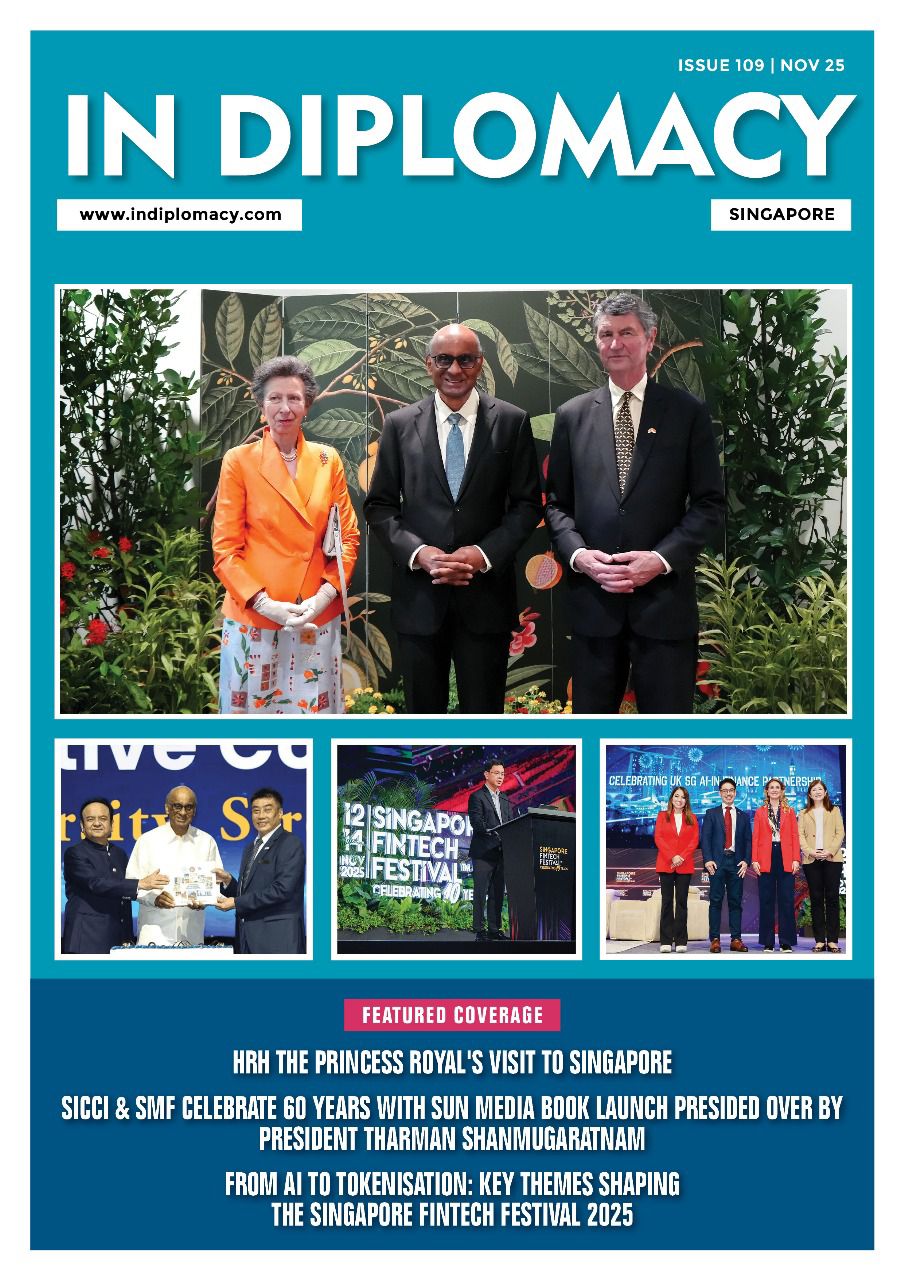
Tourism in Kashmir is currently undergoing a significant resurgence. To understand the dynamics of this revival, INDiplomacy sought insights from those directly involved. The feedback we received revealed a collection of inspiring comeback tales. We discovered that the combined efforts of local participants, supported by government initiatives, are laying the groundwork for a sustainable and flourishing future in Kashmir’s tourism sector
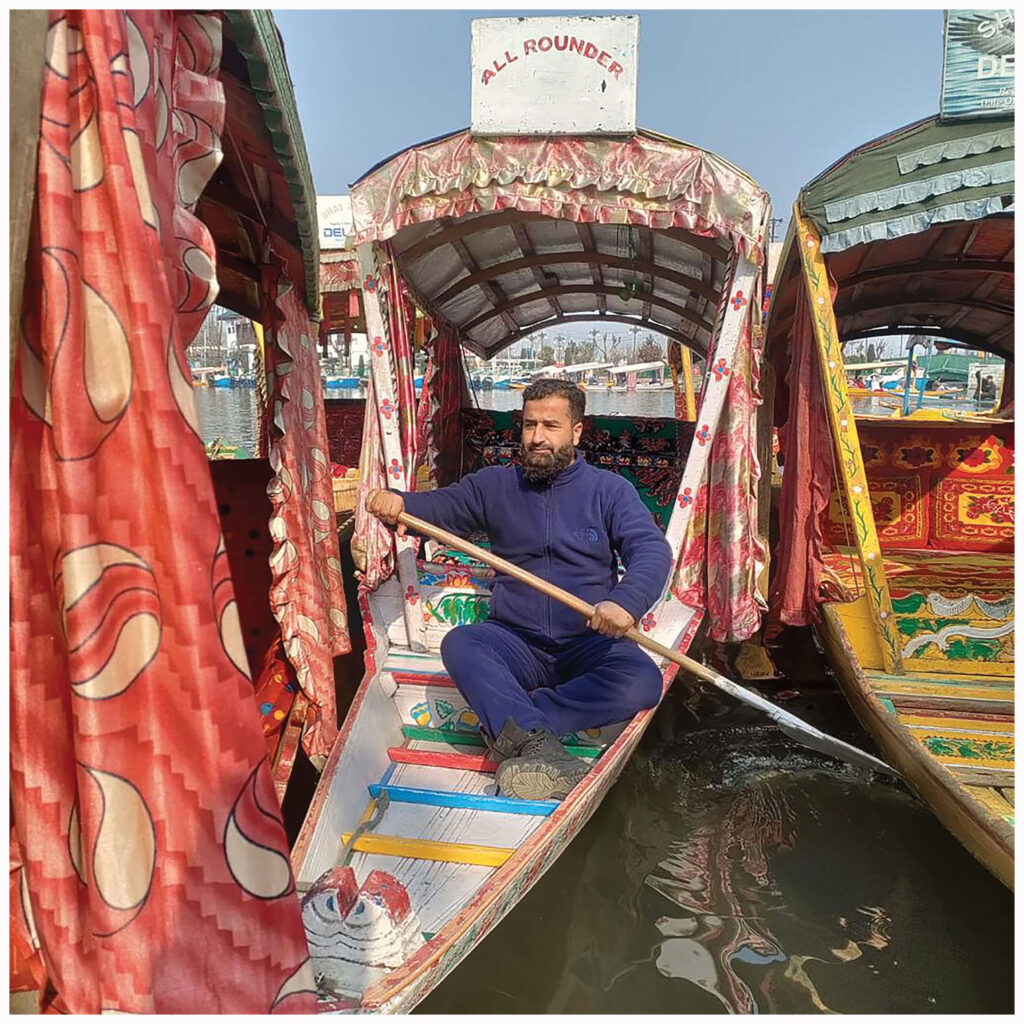
LATIF Ahmad, a shikara boatman on the serene Dal Lake, encapsulates the essence of Kashmiri hospitality. To him, hospitality isn’t just a service; it’s an art form deeply embedded in his daily life. Each day, he readies his shikara, adorning it with vibrant colors and traditional decorations, preparing to ferry tourists across the famous lake. His smile, as bright and welcoming as the Kashmiri sun, is his constant companion.
For Latif, the shikara is more than just a boat; it’s a vessel that carries not only people but also experiences and memories. He takes great pride in showing visitors the beauty of Dal Lake, often narrated with stories and insights that only a local like him could provide. The interaction with tourists from diverse backgrounds brings him joy and a sense of connection to the world beyond the lake’s waters.
The recent revival of tourism in the region has been a boon for Latif. It’s not just about the financial stability it brings; it’s about the revival of his spirit and the joy of sharing his world with others. Each group of tourists brings new faces, new stories, and new opportunities to create lasting memories. For many visitors, the ride on Latif’s shikara becomes a highlight of their Kashmir experience, and for Latif, each journey is an opportunity to showcase his homeland’s beauty and culture.
Latif’s story is a testament to the resilience and warmth of the Kashmiri people. In his smile and through his work, he embodies the spirit of revival and hope that is currently sweeping through the region. His satisfaction comes not just from making a living but from the immeasurable joy of making memories that visitors will cherish long after they leave the serene waters of Dal Lake.
Since the pandemic, Jammu and Kashmir have seen a remarkable increase in domestic tourism, fueled by enhanced air connectivity and significant infrastructure improvements. The region, now more accessible than ever, offers a diverse range of activities, appealing to various interests from serene retreats to adventurous escapades. This resurgence is not just a boost to the local economy but also a reaffirmation of the area’s magnetic appeal, making it a top destination for Indian travelers seeking unique experiences within their own country.
In today’s jargon, the most Instagrammable images of the valley are the neatly docked shikaras and the houseboats. The Chairman of Kashmir’s Houseboats Owners Association (KHBOA), Mr. Manzoor Pakhtoon, shared his optimism about the industry’s growth. KHBOA, established in 1934, plays a crucial role in preserving the region’s unique hospitality. Offering more than just accommodation, these houseboats on Dal Lake, Nigeen Lake, River Jhelum, and Chinar Bagh provide an authentic Kashmiri experience. Houseboat owners double as hosts, guides, and local tour organizers, offering a range of activities and showcasing the region’s beauty.
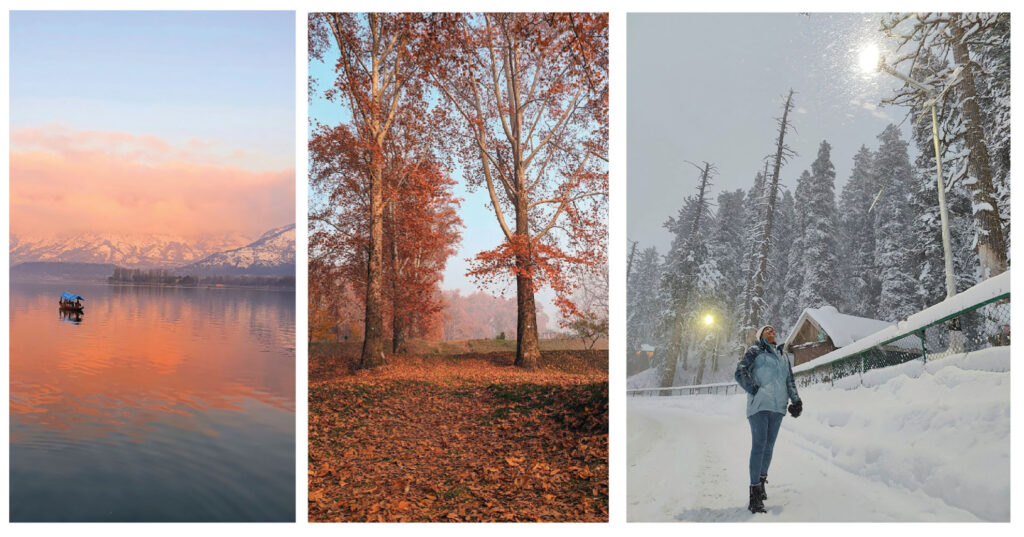
Infrastructure Upgrades
The local government and tourism authorities have made concerted efforts to upgrade the region’s infrastructure. This includes better roads, enhanced tourist facilities, and the development of new attractions. These improvements have not only made travel smoother and more comfortable but have also opened up previously inaccessible areas to tourists.
A key factor in this resurgence has been the significant increase in daily flights to the region. Improved air connectivity has made travel to Jammu and Kashmir more accessible and convenient for domestic tourists. The region, once considered remote, is now just a flight away for millions of Indians, making weekend getaways and extended vacations more feasible.
Jammu and Kashmir attracted a record 20.2 million tourists in 2023, including over 50,000 international visitors, thanks to its diverse tourism offerings, especially in MICE tourism. The G20 Tourism Working Group meeting highlighted the region’s potential in global event tourism, improving its appeal across various tourism sectors.
Local operators and houseboat owners like Manjoor Karnai and Ashraf Wangnoo have witnessed a surge in domestic tourism, attributing it to increased accessibility and the region’s allure.
Irvinder Singh from Incredible Odyssey observed a renewed global interest in Kashmir. However, he noted that travel advisories in some countries still affect tourism growth.
Bashir Guroo, a Singapore-based agent, emphasizes the importance of sustainable tourism in the eco-sensitive region of Kashmir. He advocates for tourism practices that preserve the natural paradise for future generations.
Changing Lives
The G20 meeting in Kashmir was not just a diplomatic event; it was a stage for the world to witness the harmonious blend of tradition and modernity in Kashmir. “United the World through Heritage and Innovation” was more than a theme; it was a reflection of Kashmir’s journey and its aspirations. As the region opened its doors to global leaders, it also opened up new possibilities for tourism, international cooperation, and a sustainable future, firmly positioning Kashmir on the world map as a destination where heritage and innovation coexist in perfect harmony.
Neela Lad, the former Director of Tourism at the India Tourist Office in Singapore, beautifully encapsulates the essence of Kashmir’s allure. Reflecting on her visits, she shares, “It’s very peaceful and people are so warm and hospitable. In the last few years, we have visited several times with family and friends, and one has never had enough.” Her words resonate with the experiences of many who find themselves repeatedly drawn to the serene beauty and warmth of Kashmir.
Digital Nomads Paradise
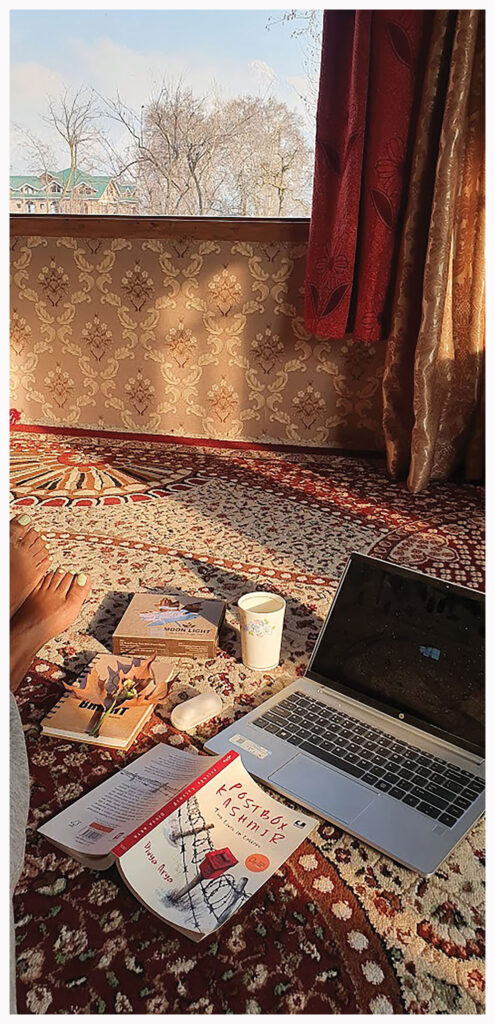
Kashmir holds an attraction for all types of travellers. Sudeshna Majumdar represents the new wave of digital-era professionals who blend work with wanderlust. As a tech-savvy individual, she has embraced the work-from-home culture, but with a twist – she chooses the breathtaking landscapes of Kashmir as her office backdrop. During her numerous visits to Srinagar, Sudeshna sets up her workspace amid its serene beauty, merging the demands of her tech career with the tranquility of nature.
In Srinagar, Sudeshna’s approach to work and exploration is remarkably adaptable. She immerses herself in the local culture, often using the city’s local transport systems to navigate. This not only gives her an authentic experience of Srinagar’s rhythm but also adds a layer of simplicity and adventure to her daily routine.
“I have made many friends here,” Sudeshna shares, her words reflecting the deep connections she has formed in the city. Her frequent trips have transcended beyond conventional tourism, evolving into a journey of building relationships, understanding local customs, and experiencing life from a Kashmiri perspective.
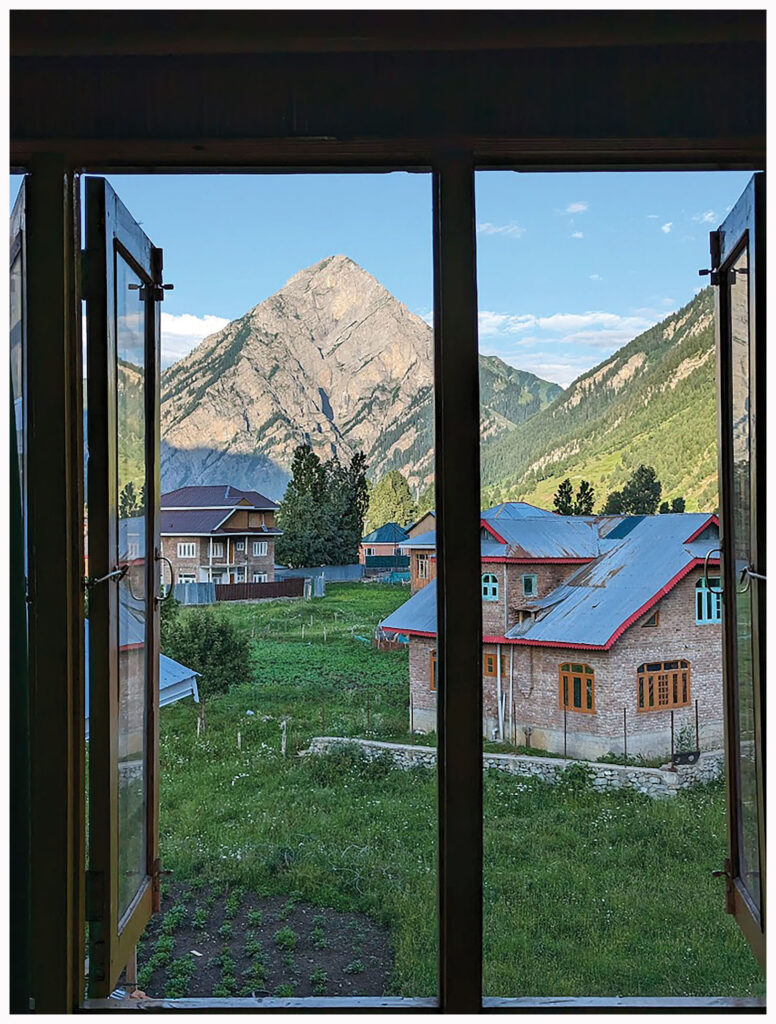
Her story is a testament to the changing dynamics of professional life, where scenic destinations like Kashmir are not just retreats but also vibrant, productive workspaces. Sudeshna Majumdar’s lifestyle exemplifies a harmonious blend of professional diligence, cultural immersion, and personal enrichment.
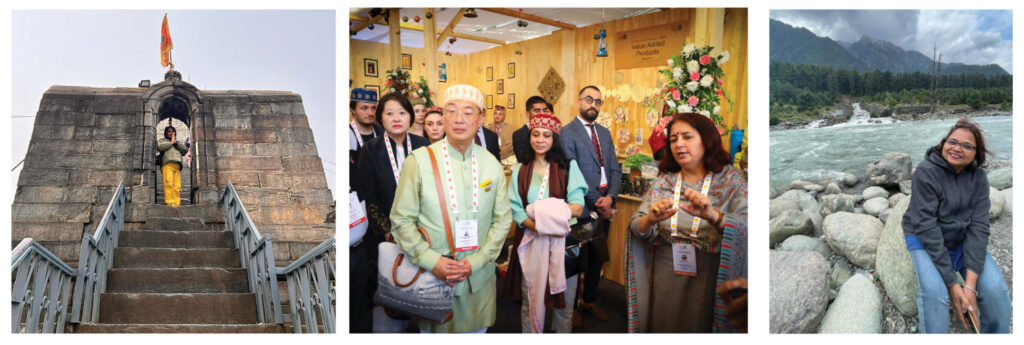
Exploring Kashmir is a sensory journey, from savoring its exquisite cuisine to immersing one’s self in the natural splendour of Gulmarg and Pahalgam, and marveling at the historic Mughal Gardens. Kashmiri cuisine, with dishes like Rogan Josh and Dum Aloo, offers a taste of rich flavors and culinary traditions. Gulmarg, a snowy paradise, is ideal for skiing, while Pahalgam’s serene landscapes promise tranquility. The Mughal Gardens, with their symmetrical beauty, reflect the region’s historical depth.
The spiritual significance of the area is underlined by sites like the Kheer Bhawani, the Vaishno Devi Temple, and Amarnath Cave and Sufi shrines drawing millions of devotees. The regions also offer thrilling adventures such as skiing in Kashmir and trekking in Jammu, enhancing their appeal for diverse travellers.
Post-pandemic, tourism in these regions has seen a significant boost, with initiatives like the establishment of the Jammu & Kashmir Tourist Village Network to promote rural tourism and transform picturesque villages into tourist hotspots. The government’s increased budget allocation for tourism in J&K, aims to develop infrastructure and promote inclusive economic growth in remote areas.
There are several opportunities that have also emerged recently; these include innovative trends in Fashion and Handicrafts, and a rising demand for Vocational Education, Technical Institutions and Film-making in the valley.
Dr. Bhaskar Jyoti, a food technologist and a Senior Programme Director, who has been exploring training oppportunities in the valley shares, “We envision a New Kashmir is equipped with enhanced skills and resources to foster the growth of a socio-economic entrepreneurial culture, focusing on industrial development and creating employment opportunities for the youth within the valley. Our primary objective is to ensure sustainability while pursuing these goals. We are currently in the midst of establishing this Center in that region.”
Carpets and Crafts have been an integral part of the Kashmir story. The owner of M K Exports Group Mr. Mudassir Khan says, “Tourism has the power to breathe new life and experience new traditions; Kashmir has a lot to offer, and post-turmoil Kashmir is spreading its wings towards a new horizon. We are blessed with traditional arts and crafts, fostering innovation yet preserving cultural heritage for generations to come.”
The Jammu and Kashmir government is also actively promoting film tourism, aiming to attract both national and international filmmakers to the region’s scenic landscapes. The Film Policy, designed to showcase the valley’s beauty and culture, also focuses on local talent integration in global cinema. Events like the National Film Festival of Jammu & Kashmir in
Srinagar are part of this strategy, offering a platform for international collaboration and showcasing the region’s creative ecosystem.
Celebrate INDIA REPUBLIC DAY 26th January 2024
Read more: IN Diplomacy INDIA Special 2024
issue PDF click here or FlipBook click here

ARTICLES ONLINE:
- H.E. Dr Shilpak Ambule: India’s G20 Impact and Diplomatic Milestones click here
- G20 Bharat Presidency: An Overview click here
- G20 Summit Highlights click here
- Bilateral Roundup: PM Lee at G20 Summit and Ministers’ Visits click here
- Bilateral Roundup: Dr Jaishankar’s Official Visit to Singapore: Opportunity to Deepen Strategic Partnership click here
- Millet Momentum A 2023 Success Story click here
- Tamil Nadu Global Investor’s Meet Attracts Singaporean Investors click here
- Vibrant Gujarat Global Summit 2024 click here
- India Welcomes World to MICE Conclave click here
- Inviting Singaporeans to Explore Incredible India click here






